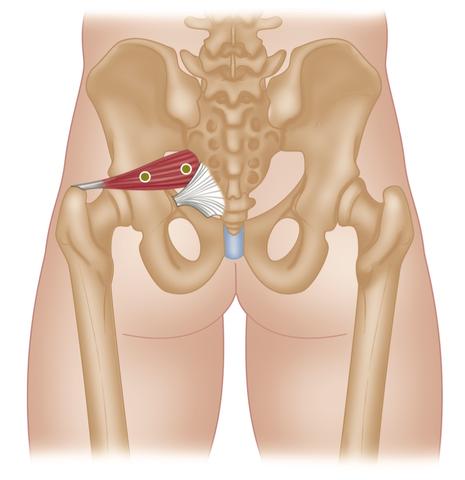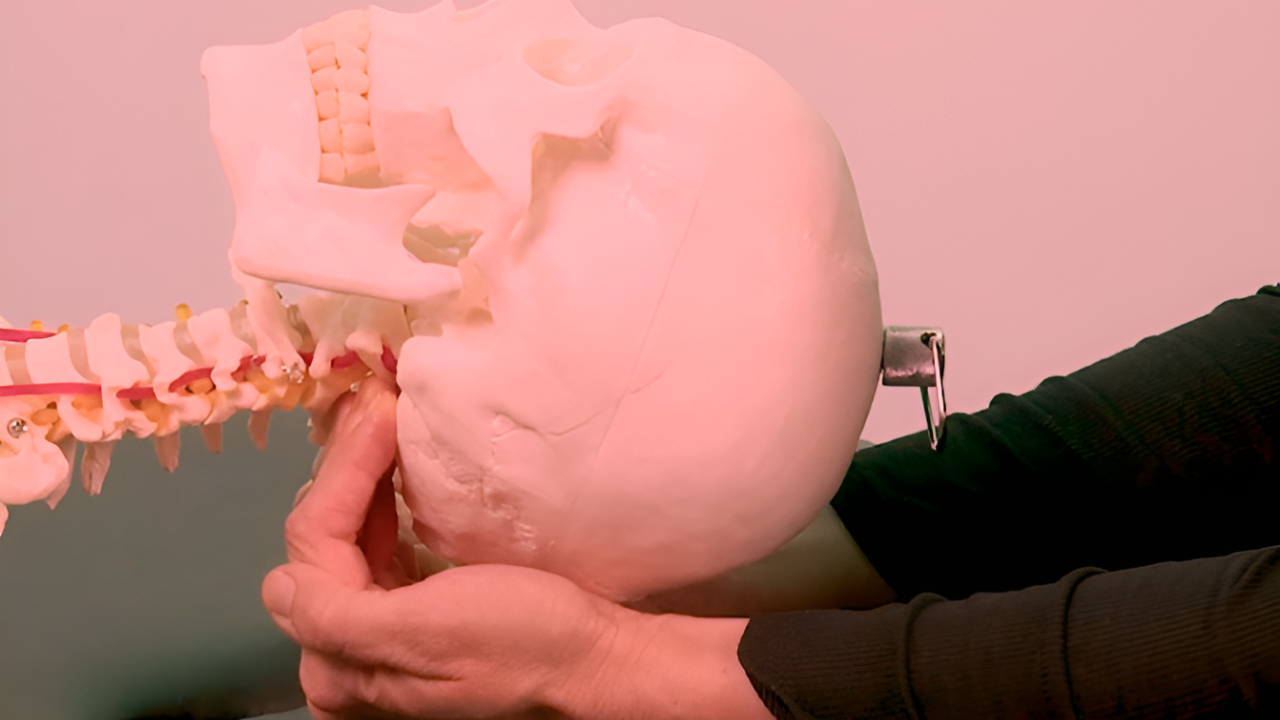Trigger Point Therapy - Piriformis Syndrome
Treating Piriformis Trigger Points - Dr. Jonathan Kuttner
Ischemic Compression Technique
Piriformis syndrome is a result of impingement of the sciatic nerve by the piriformis muscle
Incorrect form or improper gait often leads to tightness and inflexibility in piriformis. The condition occurs more frequently in women than men (6:1).
When piriformis becomes tight it puts pressure on the underlying nerve, causing pain similar to sciatica.
The pain usually starts in the mid-gluteal region and radiates down the back of the thigh.

Piriformis - Common Trigger Point Sites
Cause of injury
Incorrect form or gait while walking or jogging. Weak gluteal muscles and/or tight adductor muscles. Trigger point activity in piriformis/glutes/adductor muscles.
Signs and symptoms
Pain along the sciatic nerve. Pain when climbing stairs or walking up an incline. Increased pain after prolonged sitting.

Piriformis Trigger Points can be the cause of "Sciatica-Type" Pain
Complications if left unattended
Chronic pain will result if left untreated. The tight muscle could also become irritated causing stress on the tendons and points of attachment.
Treatment
RICER. Anti-inflammatory medication. Heat and massage to promote blood flow and healing. Trigger point therapy. Muscle Energy Techniques.
Rehabilitation and Prevention
During rehabilitation a gradual return to activity and continued stretching of the hip muscles is essential. Start with lower exercise intensity or duration. Identifying the factors that caused the problem is important, especially the treatment of active trigger points.
Strengthening the gluteal muscles and increasing the flexibility of the adductors will help to alleviate some of the stress and prevent the piriformis from becoming tight.
Maintaining a good stretching regimen to keep the piriformis muscle flexible will help, while dealing with the other issues.
Long-term Prognosis
Piriformis syndrome seldom results in long-term problems when treated properly. Rarely, a corticosteroid injection or other invasive method may be required to alleviate symptoms.
This trigger point therapy blog is intended to be used for information purposes only and is not intended to be used for medical diagnosis or treatment or to substitute for a medical diagnosis and/or treatment rendered or prescribed by a physician or competent healthcare professional. This information is designed as educational material, but should not be taken as a recommendation for treatment of any particular person or patient. Always consult your physician if you think you need treatment or if you feel unwell.


Learn More for Less

Unlimited access to all courses for just $19.95/mo










